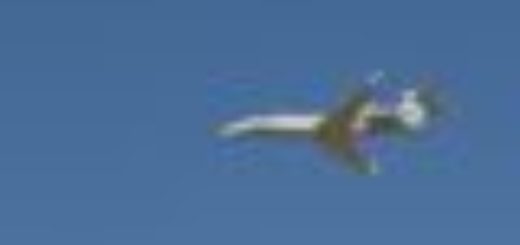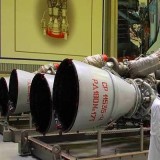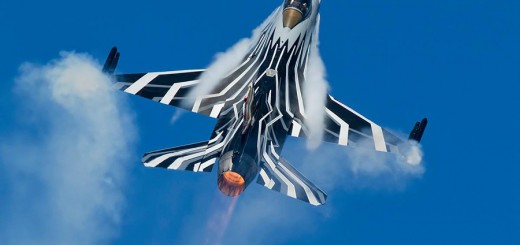Irish Air Corps Enhances Capabilities with H145M Helicopters for Reconnaissance and Combat Support
{loadposition bannertop}
{loadposition sidebarpub}
Ireland is set to take a step in modernizing its aerial capabilities. The government recently signed a €91.7 million contract, excluding VAT, to acquire four Airbus H145M helicopters. These aircraft will replace the Irish Air Corps’ aging EC-135 fleet, which has reached the end of its operational life, and will expand the country’s military aviation capabilities. The first deliveries are expected in the first quarter of 2027, marking a transformative development for the nation’s armed forces.
Follow Army Recognition on Google News at this link
The H145M’s HForce weapon system offers precision and flexibility, accommodating machine guns, cannons, rockets, and guided missiles (Picture source: Airbus)
The new helicopters will play a critical role in defense missions and operations for the Garda Air Support Unit. Their versatility will enable maritime security, intelligence gathering, surveillance, target acquisition, reconnaissance, utility transport, and light attack missions. This investment significantly upgrades the Irish Air Corps’ capabilities, providing a tested and reliable platform used by military forces worldwide.
The Airbus H145M is a highly adaptable military helicopter for modern battlefield challenges. Powered by twin Safran Arriel 2E engines with Full Authority Digital Engine Control (FADEC), it combines speed, endurance, and payload capacity to deliver exceptional performance. Built for demanding environments, such as high altitudes and extreme temperatures, it features a Fenestron tail rotor for enhanced anti-torque control, self-sealing fuel tanks, and ballistic protection for improved survivability. Its modular cabin allows quick reconfiguration for missions ranging from troop transport to search-and-rescue or armed operations.
The H145M’s HForce weapon system offers precision and flexibility, accommodating machine guns, cannons, rockets, and guided missiles. This system integrates advanced targeting options, including helmet-mounted displays and electro-optical systems. Night-vision compatibility, the Helionix avionics suite, and a four-axis autopilot enhance operational efficiency while reducing pilot workload. Deployed by forces such as the German Bundeswehr and the U.S. Army (UH-72 Lakota variant), the H145M has proven its reliability in tactical and combat support roles.
Minister for Defence and Tánaiste Micheál Martin highlighted that this acquisition reflects the government’s broader commitment to strengthening aerial capabilities. He pointed to recent fleet expansions, including two Airbus C295 maritime patrol aircraft delivered over the past 18 months and a military transport C295 expected next year. Additionally, the Falcon 6X strategic reach aircraft, slated for delivery in December 2025, will further bolster Ireland’s aerial operations.
Lieutenant General Seán Clancy, Chief of Staff of the Defence Forces, described the H145M acquisition as a cornerstone in transforming Ireland’s armed forces. These helicopters will enhance the Irish Air Corps’ capabilities while providing critical support to the army, navy, and special operations forces. Brigadier General Rory O’Connor, Air Corps Commander, emphasized their importance for training the next generation of rotary-wing pilots and maintaining operational readiness.
The Irish Air Corps’ current fleet includes a diverse mix of fixed-wing aircraft and helicopters. It operates six AgustaWestland AW139s for transport and support missions, Pilatus PC-9Ms for pilot training, and Pilatus PC-12s for reconnaissance and light transport. Additionally, Airbus C295 aircraft reinforce Ireland’s maritime surveillance capabilities. This diversity enables the Air Corps to perform an extensive range of missions, from national defense to civil support.
With the arrival of the H145Ms in 2027, the Irish Air Corps is poised to enter a new era of enhanced flexibility and operational capacity. This acquisition underscores Ireland’s commitment to modernizing its defense forces and strengthening their role in both national and international missions.

{loadposition bannertop}
{loadposition sidebarpub}
Ireland is set to take a step in modernizing its aerial capabilities. The government recently signed a €91.7 million contract, excluding VAT, to acquire four Airbus H145M helicopters. These aircraft will replace the Irish Air Corps’ aging EC-135 fleet, which has reached the end of its operational life, and will expand the country’s military aviation capabilities. The first deliveries are expected in the first quarter of 2027, marking a transformative development for the nation’s armed forces.
The H145M’s HForce weapon system offers precision and flexibility, accommodating machine guns, cannons, rockets, and guided missiles (Picture source: Airbus)
The new helicopters will play a critical role in defense missions and operations for the Garda Air Support Unit. Their versatility will enable maritime security, intelligence gathering, surveillance, target acquisition, reconnaissance, utility transport, and light attack missions. This investment significantly upgrades the Irish Air Corps’ capabilities, providing a tested and reliable platform used by military forces worldwide.
The Airbus H145M is a highly adaptable military helicopter for modern battlefield challenges. Powered by twin Safran Arriel 2E engines with Full Authority Digital Engine Control (FADEC), it combines speed, endurance, and payload capacity to deliver exceptional performance. Built for demanding environments, such as high altitudes and extreme temperatures, it features a Fenestron tail rotor for enhanced anti-torque control, self-sealing fuel tanks, and ballistic protection for improved survivability. Its modular cabin allows quick reconfiguration for missions ranging from troop transport to search-and-rescue or armed operations.
The H145M’s HForce weapon system offers precision and flexibility, accommodating machine guns, cannons, rockets, and guided missiles. This system integrates advanced targeting options, including helmet-mounted displays and electro-optical systems. Night-vision compatibility, the Helionix avionics suite, and a four-axis autopilot enhance operational efficiency while reducing pilot workload. Deployed by forces such as the German Bundeswehr and the U.S. Army (UH-72 Lakota variant), the H145M has proven its reliability in tactical and combat support roles.
Minister for Defence and Tánaiste Micheál Martin highlighted that this acquisition reflects the government’s broader commitment to strengthening aerial capabilities. He pointed to recent fleet expansions, including two Airbus C295 maritime patrol aircraft delivered over the past 18 months and a military transport C295 expected next year. Additionally, the Falcon 6X strategic reach aircraft, slated for delivery in December 2025, will further bolster Ireland’s aerial operations.
Lieutenant General Seán Clancy, Chief of Staff of the Defence Forces, described the H145M acquisition as a cornerstone in transforming Ireland’s armed forces. These helicopters will enhance the Irish Air Corps’ capabilities while providing critical support to the army, navy, and special operations forces. Brigadier General Rory O’Connor, Air Corps Commander, emphasized their importance for training the next generation of rotary-wing pilots and maintaining operational readiness.
The Irish Air Corps’ current fleet includes a diverse mix of fixed-wing aircraft and helicopters. It operates six AgustaWestland AW139s for transport and support missions, Pilatus PC-9Ms for pilot training, and Pilatus PC-12s for reconnaissance and light transport. Additionally, Airbus C295 aircraft reinforce Ireland’s maritime surveillance capabilities. This diversity enables the Air Corps to perform an extensive range of missions, from national defense to civil support.
With the arrival of the H145Ms in 2027, the Irish Air Corps is poised to enter a new era of enhanced flexibility and operational capacity. This acquisition underscores Ireland’s commitment to modernizing its defense forces and strengthening their role in both national and international missions.







